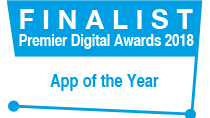
Social Networking & Safeguarding: 2016
Posted on: September 9, 2016
UPDATE – This blog is now out of date. We have written a 2020 update here
In 2009 we published a blog about the use of social networking and child protection. In the last 7 years more and more young people have engaged with using social networking and sites like Myspace and Bebo have been replaced with Instagram, Snapchat and WhatsApp.
Social networking can be a really powerful tool for connecting with young people, plugging events and engaging them in conversation however it doesn’t come without risks.
To help equip you in your ministry we’ve written a sample section of a child protection policy on social networking plus we’ve got some advice for paid youth workers and volunteers (updated for 2016!)
Tips for Paid Youth Workers
Our first bit of crucial advice is to have a separate youth worker account on Facebook. This is important on many levels but primarily it means you can separate work and time off but it also means your friends won’t post inappropriate things on your page (if you have those kind of friends!)
Having a Facebook account solely for youth work purposes also means that you can perhaps have several of your team using it but also your password and username can be available to your line-manager so that your account can be checked (if required for whatever reason). This adds an extra dimension of accountability without passing details of your personal account n.
Tips for Volunteers
It’s probably not right to suggest that volunteers have a separate youth work account however it’s important to make sure they’re aware of your safeguarding policy. We give our volunteers a leaflet when they start to help out and the section on ‘using social networking’ reads as follows;
Social networking can be a helpful tool in working with young people. If you choose to use these in your ministry please ensure that the safe behaviour code continues into the virtual world of social networking sites, keeping your profile appropriate for the viewing of young people.
If you’re contacting young people using these sites always do this in a public way. Do not use instant chat or private messages even if a young person sends you messages using these tools. It is also important that you also avoid using abbreviations such as ‘LOL’ as these can be misinterpreted by parents/guardians.
Remember to apply all the other good practice guidelines discussed within this leaflet in any interaction you have with young people online.
Sample Child Protection Policy on Social Networking
We have updated and put together a safeguarding policy for using social networking which can be found here (and linked below). As always feel free to use it and tweak it however it’s always nice to know if our material is useful so do drop us a line and let us know if you like it!
You can also download the policy and consent forms that include social media permission in our useful forms/documents section
